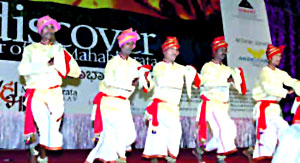 Tamil theatre is probably the longest linguistic continuity in Indian theatre. With no romanticization of its ancient origins, one can safely say that remnants and deviations of past traditions find their place in Tamil theatre in different forms. Based on them, one can actually define cultural zones in the southern state of Tamil Nadu by geographical features, occupational aspects, and linguistic clusters. Indeed, ancient Tamil texts classified their land into five regions. These can be mentioned as mountainous, forested, agricultural, coastal and arid. These differentiated life, culture, and art forms in each according to these categories.
Tamil theatre is probably the longest linguistic continuity in Indian theatre. With no romanticization of its ancient origins, one can safely say that remnants and deviations of past traditions find their place in Tamil theatre in different forms. Based on them, one can actually define cultural zones in the southern state of Tamil Nadu by geographical features, occupational aspects, and linguistic clusters. Indeed, ancient Tamil texts classified their land into five regions. These can be mentioned as mountainous, forested, agricultural, coastal and arid. These differentiated life, culture, and art forms in each according to these categories.
The ballad traditions have a storyline to offer, the abstract dances have no oral narratives to accompany them, and the narrative forms combine story with performance. Villuppattu and Udukkadippattu are examples of the first, from southern and western Tamil Nadu respectively. In them, local heroes survive and local deities are sung. They contain features that remain on the fringes, not absorbed by any homogenized religious system. Tappattam, Devarattam, Oyilattam, Karagattam, Poykkal Kudhirai, and Kummi belong to the second kind, some with only rhythm and instrumental music, and some with supporting singers. They belong to specific communities following strict feudal orders. The most important among the third category, the thriving Terukkuttu widely prevalent in the northern districts, combines dance, music, plot, dialogue, acting, and costume. Variations can be found in other parts. It is professional in the sense that troupes organize and re-mobilize each year.
The energy, theatrical potential, variety, and versatility of these forms are immense, but most do not allow women to participate or castes to mix. Although their stories deal with mythical and Puranic tales, the performance styles provide great scope to subvert, modernize, and critically interpret. Their inherent parodic features are of value in following the tradition while simultaneously inverting it. Minor forms like Bommalattam, Kuravanji Natakam, Nondi Natakam, Katha Kalakshepam, Pallu, Kirttanai, and Vilasam date from the seventeenth, eighteenth, and nineteenth centuries. Not all survive today. An isolated genre of Telugu dance-drama, Bhagavata Mela, continues to exist in a few villages of central Tamil Nadu.
Tamil literature contains many references to performing traditions, modes, and theories. The Tolkappiyam grammar lists communicable emotions as meyppattu. The Kuttanul mentions aesthetic emotions too. Sangam works refer to communities of minstrels called Panars and Viraliyars, who were local chieftains` emissaries to citizens and vice versa. The epic Cilappatikaram records performance styles in different parts of Tamil Nadu, distinguishes between classical and popular forms. It also refers to stage measurements, varieties of screens, and other technical details. Its section titled Arangetrra katai can be considered a treatise on performatory norms, and reveals an advanced theatrical sensibility.
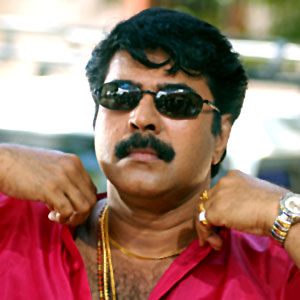 The arrival of the British introduced new forms along with the proscenium. By the end of the nineteenth century, Sankaradas Swamigal explored the possibilities of professionalizing theatre. He retained the singing and dancing traditions, and the Puranic stories, but took scenic devices and stage structure from the West. He also initiated the concept of boys` companies, which became very popular in villages. Important later leaders included Rajamanikkam and C. Kanniah, a wizard of set design. After T. K. S. Brothers introduced actresses, women began to participate in theatre. Initially they were trained while young and grew up in the theatres. A few enterprising all-women troupes arose, such as Balamani Ammal`s. There are instances of actresses cross-dressing in rajas` parts even now.
The arrival of the British introduced new forms along with the proscenium. By the end of the nineteenth century, Sankaradas Swamigal explored the possibilities of professionalizing theatre. He retained the singing and dancing traditions, and the Puranic stories, but took scenic devices and stage structure from the West. He also initiated the concept of boys` companies, which became very popular in villages. Important later leaders included Rajamanikkam and C. Kanniah, a wizard of set design. After T. K. S. Brothers introduced actresses, women began to participate in theatre. Initially they were trained while young and grew up in the theatres. A few enterprising all-women troupes arose, such as Balamani Ammal`s. There are instances of actresses cross-dressing in rajas` parts even now.
With Swamigal`s texts as the central link, these musicals are known as `Special drama`, since they have unique organizational principles. The artists register in sangams or pools. Each has agents who keep track of his or her call sheets. If a village invites a play, the agent through the sangam arranges a team that assembles on the day of the performance with prior information about the cast, and enacts an all-night show. Since the team does not present a regular production, each performance comes up with improvisation. In any case, the story is already well known, including lyrics, tunes, and sequence, so the surprise lies in these improvisations. Actors have to constantly update their literary references, contemporary views, and philosophic discourses.
Meanwhile, during the advent of British rule P. Sundaram Pillai wrote the first Western-style Tamil drama, Pammal Sambandha Mudaliar heralded this new form. A person who once detested theatre as obscene and vulgar, he got converted on seeing literate high officials from Andhra performing in Telugu. His Suguna Vilasa Sabha started staging three-hour-long plays in fluent modern prose. The first time that prose had a legitimate part in the narrative. He also translated classic English drama into Tamil. He prioritized acting above singing but could only get men to do female roles. Many similar amateur sabhas or groups sprang up in smaller cities. A new brand of educated actors evolved. Characterization and novelty of plot became important in this genre, which thrived in most towns till the 1950s, as in the plays of S. D. Sundaram.
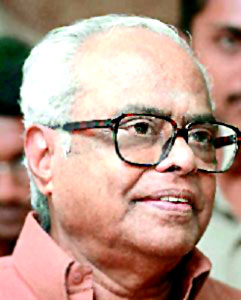 This sabha natakam must be differentiated from what came to be known as sabhas later. Urban societies formed by paid enrolment to patronize music, dance, and theatre. The new system assured performers of middle-class audiences. These sabhas grew into powerful agencies, determining the character of cultural life by choosing what to sponsor or not. Since more members brought better financial returns, they set dubious trends by deciding what can pass as art. However, the theatre groups were not commercial in the sense of surviving by ticket sales. Most artists were amateurs with other options for their livelihoods. Drama became an evening activity for them. S. V. Sahasranamam, K. Balachander, Komal Swaminathan, and Poornam Viswanathan were among the few to practise this form seriously. Cho Ramaswamy used it to convey political satire, almost journalistic in quality. S. V. Sekhar, Crazy Mohan, and smaller upstart groups attempted this mode for entertainment, Sekhar proving extremely successful in procuring shows. This theatrical trend has almost vanished or shifted to `television drama` and serials for its sustenance.
This sabha natakam must be differentiated from what came to be known as sabhas later. Urban societies formed by paid enrolment to patronize music, dance, and theatre. The new system assured performers of middle-class audiences. These sabhas grew into powerful agencies, determining the character of cultural life by choosing what to sponsor or not. Since more members brought better financial returns, they set dubious trends by deciding what can pass as art. However, the theatre groups were not commercial in the sense of surviving by ticket sales. Most artists were amateurs with other options for their livelihoods. Drama became an evening activity for them. S. V. Sahasranamam, K. Balachander, Komal Swaminathan, and Poornam Viswanathan were among the few to practise this form seriously. Cho Ramaswamy used it to convey political satire, almost journalistic in quality. S. V. Sekhar, Crazy Mohan, and smaller upstart groups attempted this mode for entertainment, Sekhar proving extremely successful in procuring shows. This theatrical trend has almost vanished or shifted to `television drama` and serials for its sustenance.
On the other hand, the mass popularity of Sangita Natakam or musical drama continued unabated. The stellar performers in this genre were S. G. Kittappa, K. B. Sundarambal, and M. K. Thyagaraja Bhagavathar. Other famous actors included the specialist in villainous roles e.g. R. S. Manohar and the comedian N. S. Krishnan. When Tamil cinema started in the 1930s, theatre provided the acting and singing talents that the talkies needed. No fundamental difference existed between the two arts. The earliest movies were just filmed prints of stage productions. Political parties and their cultural agenda need separate study. The Indian People`s Theatre Association never had a noticeable presence in the state. The Dravidian movement especially had its own artists. C. N. Annadurai`s plays were the major campaign pieces of their ideology. M. Karunanidhi continued that tradition of rhetoric intimately familiar to Tamils as Dravidian. This political theatre went on to have a powerful say in Tamil films. A deep relationship exists between stage or screen status and political power in Tamil Nadu, where star actors and actresses have an unquestioned mass appeal. The role of leftist parties is not big, but they have been consistent in their activities. Chennai Kalai Kuzhu, ideologically Marxist, is a major force in both proscenium and street theatre.
In Tamil, modern, experimental, and contemporary words refer interchangeably to serious theatre. This happened in the last quarter of the twentieth century. Most of these efforts depend on some source of subsidy. Several groups consider theatre part of their political commitment and survive by sheer involvement of members. But their varied modes of expression make it difficult to classify them. A basic mapping of events, groups, and personalities is attempted here. One can trace the beginning of `modern Indian theatre` to a workshop in Gandhigram in Dindigul district by S. P. Srinivasan and S. Ramanujam in 1977. In 1978 a month-long National School of Drama workshop followed. This consolidated the practitioners` commitment. Bansi Kaul`s Pinam tinnum satirankal i.e. `Corpse-devouring Customs` in 1978, dealing with Duryodhana`s disrobing of Draupadi, was a milestone production. In 1980, the group Veedhi in Madras invited Badal Sircar to conduct a workshop at the Artists Village. These three workshops started new trends in Tamil theatre.
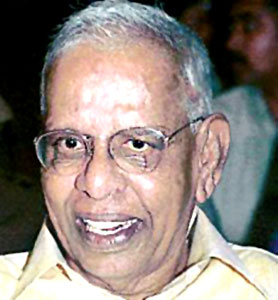 Two important Madras groups, Koothu-p-pattarai led by Na. Muthuswamy and Pareeksha led by Gnani Sankaran, began in 1977. By 1988, Koothu-p-pattarai grew into the only repertory in Tamil Nadu. Emphasis on actor`s training based on various forms of theatre, dance, and martial arts is its major strength. Pareeksha started with the aim of appealing to the new urban middle-class sensibility. Its members regarded theatre as a cultural movement. Therefore shared all the work related to performance. They sold tickets for a flat nominal price, stuck posters, publicized and organized discussions. The introduction of Badal Sircar`s plays in Tamil was its contribution. It also staged Prabanjan`s Muttai i.e. `Egg` in 1990, Jeyanthan`s Manusha manusha i.e. `Humans` in 2000, and short mimes on topical issues. Sircar[s influence was obvious in Gnani`s ideas rather than style. Pareeksha tried to sustain modern theatre by holding shows continuously in one place, but it is no longer as active.
Two important Madras groups, Koothu-p-pattarai led by Na. Muthuswamy and Pareeksha led by Gnani Sankaran, began in 1977. By 1988, Koothu-p-pattarai grew into the only repertory in Tamil Nadu. Emphasis on actor`s training based on various forms of theatre, dance, and martial arts is its major strength. Pareeksha started with the aim of appealing to the new urban middle-class sensibility. Its members regarded theatre as a cultural movement. Therefore shared all the work related to performance. They sold tickets for a flat nominal price, stuck posters, publicized and organized discussions. The introduction of Badal Sircar`s plays in Tamil was its contribution. It also staged Prabanjan`s Muttai i.e. `Egg` in 1990, Jeyanthan`s Manusha manusha i.e. `Humans` in 2000, and short mimes on topical issues. Sircar[s influence was obvious in Gnani`s ideas rather than style. Pareeksha tried to sustain modern theatre by holding shows continuously in one place, but it is no longer as active.
In 1978, Nija Nataka Iyakkam led by M. Ramasamy of the Tamil department of Madurai University made a mark in Madurai and neighbouring areas. It originally performed mainly street plays. Highly physical and energetic, the group left an indelible mark in the southern region. Turkira avalam i.e. `Turkira`s Tragedy` was its major production. This was an adaptation of Antigone. It also enacted Sircar`s Spartacus in the round, an event that toured many places in Tamil Nadu. Ramasamy now heads the Department of Drama in Tamil University, Thanjavur, and continues work in training and children theatre. Other than at Tamil University and the School of Performing Arts in Pondicherry University, theatre education is non-existent. The Folklore Resources and Research Centre in Palayankottai initiated theatre training, and the University of Madras encourages theatre research.
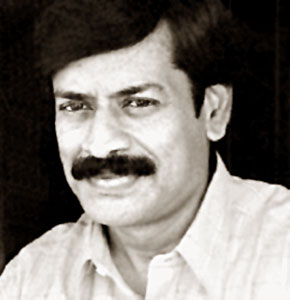 Along with Muthuswamy, Indira Parthasarathy is a major playwright, revealing a modern sensibility and knowledge of Tamil literary and philosophic traditions. Aswaghosh, Parambai Selvan, K. A. Gunasekaran, K. S. Rajendran, Jeyanthan, Rengarajan, Amshan Kumar, and `Vizhippu` Natarajan became involved in theatre during the 1980s. A number of new groups formed, like the Chennai Kalai Kuzhu, Palkalai Arangam, Arangam, Thalai-k-kol, Adukalam, Aikya, and Aroopam, not all of them equally consistent. Many youngsters took to theatre seriously, and debates and discussions grew among theatre people. Ramanujam`s Veriyattam i.e. `Frenzied Dance` in 1990, V. Arumugham`s Karunchuzlri i.e. `Black Whirlpool` in 1990, Pralayan`s Puratchikkavi i.e. `Revolutionary Poet` in 1991, and Parthasarathy`s Nandan kathai i.e. `The Legend of Nandan` directed by R. Raju in 1997 were noteworthy productions.
Along with Muthuswamy, Indira Parthasarathy is a major playwright, revealing a modern sensibility and knowledge of Tamil literary and philosophic traditions. Aswaghosh, Parambai Selvan, K. A. Gunasekaran, K. S. Rajendran, Jeyanthan, Rengarajan, Amshan Kumar, and `Vizhippu` Natarajan became involved in theatre during the 1980s. A number of new groups formed, like the Chennai Kalai Kuzhu, Palkalai Arangam, Arangam, Thalai-k-kol, Adukalam, Aikya, and Aroopam, not all of them equally consistent. Many youngsters took to theatre seriously, and debates and discussions grew among theatre people. Ramanujam`s Veriyattam i.e. `Frenzied Dance` in 1990, V. Arumugham`s Karunchuzlri i.e. `Black Whirlpool` in 1990, Pralayan`s Puratchikkavi i.e. `Revolutionary Poet` in 1991, and Parthasarathy`s Nandan kathai i.e. `The Legend of Nandan` directed by R. Raju in 1997 were noteworthy productions.
In the 1990s, a few other names established themselves. Velu Saravanan evolved as a children`s-theatre specialist and formed Azhi. Mangai focused on gender issues through Voicing Silence. Jeeva tried to combine her gender and Dalit concerns through the APTIST group. Gunasekaran`s Baliyadukal i.e. `Scapegoats` in 1998 spoke of a Dalit theatre. Pasupathy, Praveen, and Muruga Bhoopathy worked consistently. Gandhi Mary regularly conducted workshops in schools and published plays. Ramalingam worked in a school in Hosur in Dharmapuri district. Sister Clare and Father Britto, taught by Sircar, trained several groups. Many voluntary agencies added theatre to their agenda.
The role of various festivals deserves mention. Among them Subhamangala fesival was the Chief. This was organized on the initiative of Komal Swaminathan, which provided a platform for different kinds of theatre to meet in one place. A Badal Sircar festival in Tiruchchirappalli consolidated his influence on Tamil theatre. A major activity of Nija Nataka Iyakkam was to hold annual festivals. On its tenth anniversary in 1988, it started hosting modern-theatre festivals, which served as a major forum until 1992. The Sangeet Natak Akademi`s regional festivals gave exposure otherwise difficult to dream of in Tamil Nadu. Purisai Nataka Vizha was another important space for traditional and modern theatre to meet. The annual Kattaikkuttu festivals of Terukkuttu in Kanchipuram enabled many theatre lovers to get to know this living art.




















